How are horses bred and trained at Ampascachi?
By: Nestor Imberti Posted: 03/01/2020
Principles of breeding, starting and training at Ampascachi
Ampascachi Horse Riding Holidays specializes in Equestrian Tourism in Argentina. Our purpose is that horse enthusiasts from the world, and those enthusiasts-to-be, visit Argentina riding a Peruvian Paso Horse.
Ampascachi started its activities in the 90s, when we founded Haras Ampascachi, a rural establishment that is exclusively involved in breeding, taming and training the Peruvian Paso Horse (PPH), and training horse tamers, through the Equine Taming School.
Haras Ampascachi, which today belongs to strong>Ampascachi Horse Riding Holidays, provides the latter with all the horses they use in their equestrian routes.
For horseback tours or Equestrian Tourism, you need horses with optimal conditions and, in this regard, the PPH is the best adapted.
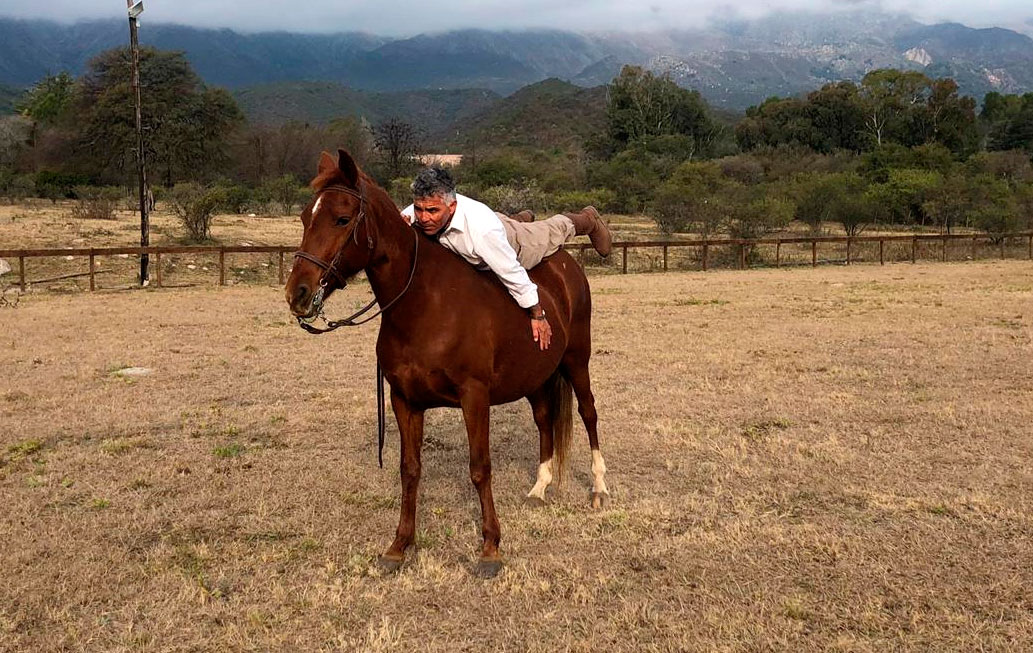
The merit of the Peruvian Paso
The PPH was genetically developed by evolution and selected by man, over five hundred years, to travel fast and comfortable.
The selection aimed at achieving, based on the Spanish horse brought with the conquest of America, an animal capable of fulfilling that purpose of travelling, in the best possible way.
Due to these processes with the PPH, a mechanics of movement was developed and that is called the modality of Paso Llano, which enables the horse to cover a long distance over a very short time, as compared with other breeds that, in order to equal that speed, must move with a trot or canter.
The PPH performs this walk in a very gentle way, that is, without affecting the rider’s lower back. This allows even rather elderly people, with back problems, to ride again.
This gentleness is determined by the broken amble, a way of moving characterized by the movement of the front and rear limbs, of the same side and at the same time, which move forward, touching the ground in each beat, the rear limb first and then the front one, on the same side where the movement was initiated. Thus, the resulting gait, or way of walking, is known as Paso Llano, of four isochronous beats, which prevents the horse’s centre of gravity from bouncing vertically. Instead of that, the horse performs a little swinging movement in a horizontal plane.
Thanks to this mechanics of movement of the PPH, riders can ride more than 50 km a day in a way that is very comfortable for them and the horses.
It is important to mention that the PPH doesn’t learn to move like this.
This way of walking of the PPH is genetic heritage.
These characteristics of the PPH, together with its energy, typical of the breed, are essential and very favourable for horseback rides – a special experience that can only be explained by riding them.

Travelling on an “All-Terrain” Horse
In order to travel, we need the horse to be “all-terrain”, resistant, rough and strong, because it is useless to have a gentle or comfortable horse, if it isn’t capable of walking on different types of terrain, or resisting long rides with changing climate, feeding or topographic conditions, to which it must adapt in the best possible way. And in that sense, the strength and rusticity of the horse play a key role when it comes to travelling.
Due to all of this, in Haras Ampascachi they focus on four fundamental aspects when breeding and preparing exceptional PPHs for Equestrian Tourism. These aspects are:
- Gentleness when moving forward
- Resistance
- Strength
- Rusticity
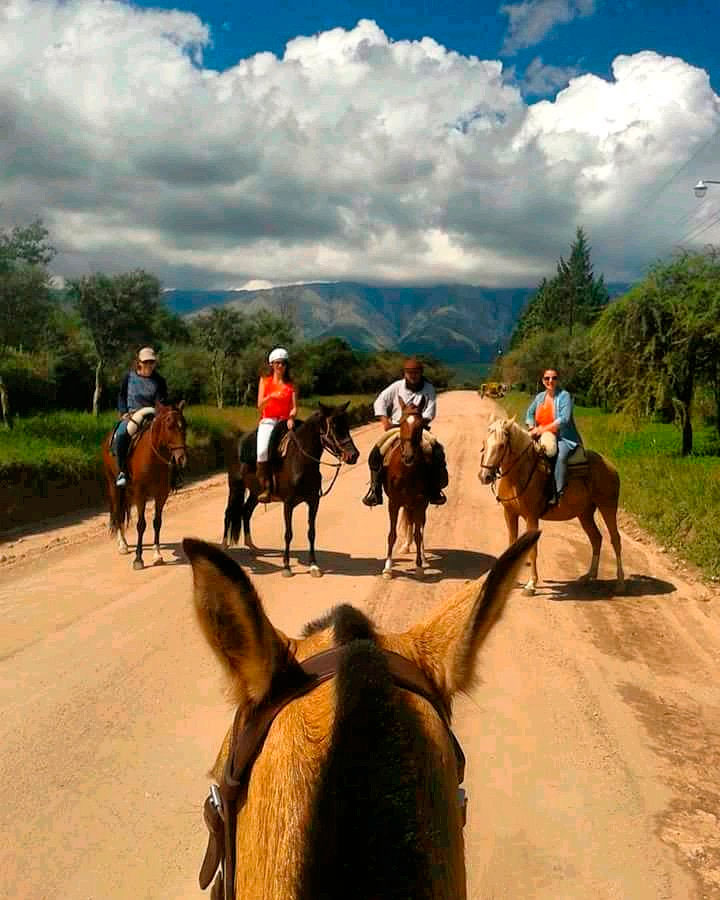
Although these characteristics or aspects are typical of the breed genetics, they must be reinforced, to a great extent, by the way horses are bred, tamed and trained during their first five years, and then throughout their working life.
Only through a meticulous observance of three elements, which we’ll explain, those four aspects (mentioned before) can be fully developed.
Would you like to be part of a group with an equestrian soul?
Join the Ampascachi Community. Obtain exclusive benefits for your holidays.
We tell you how to start, train and take care of your horse.
Interviews with direct providers of riding tours around the world.
Opinions of outstanding equine scientists and personalities in the equestrian sport world.
Horse Breeding
For millions of years, horses have been prey animals, and those that were able to survive in the wild were the best adapted to that condition, in other words, they had to develop all their senses to escape.
Horses in the wild, before they were tamed by humans, used to live completely free and in herds.
This herd scheme has a purpose, a sense of collaboration, each individual has a hierarchy within the group, and collaboration can be seen when they have to escape from danger together or look for better pastures.
A horse is genetically designed to be in a herd, grazing together, fighting for hierarchy, etc.
Therefore, the more we respect its natural environment and the way of life that it evolved from, the better the results we’ll obtain in its Breeding.
Not only will we achieve an optimal development of its muscle and bone structure, but also psychologically balanced horses, without stress. This last aspect is very important because it contributes to a better learning, that is, a better taming.
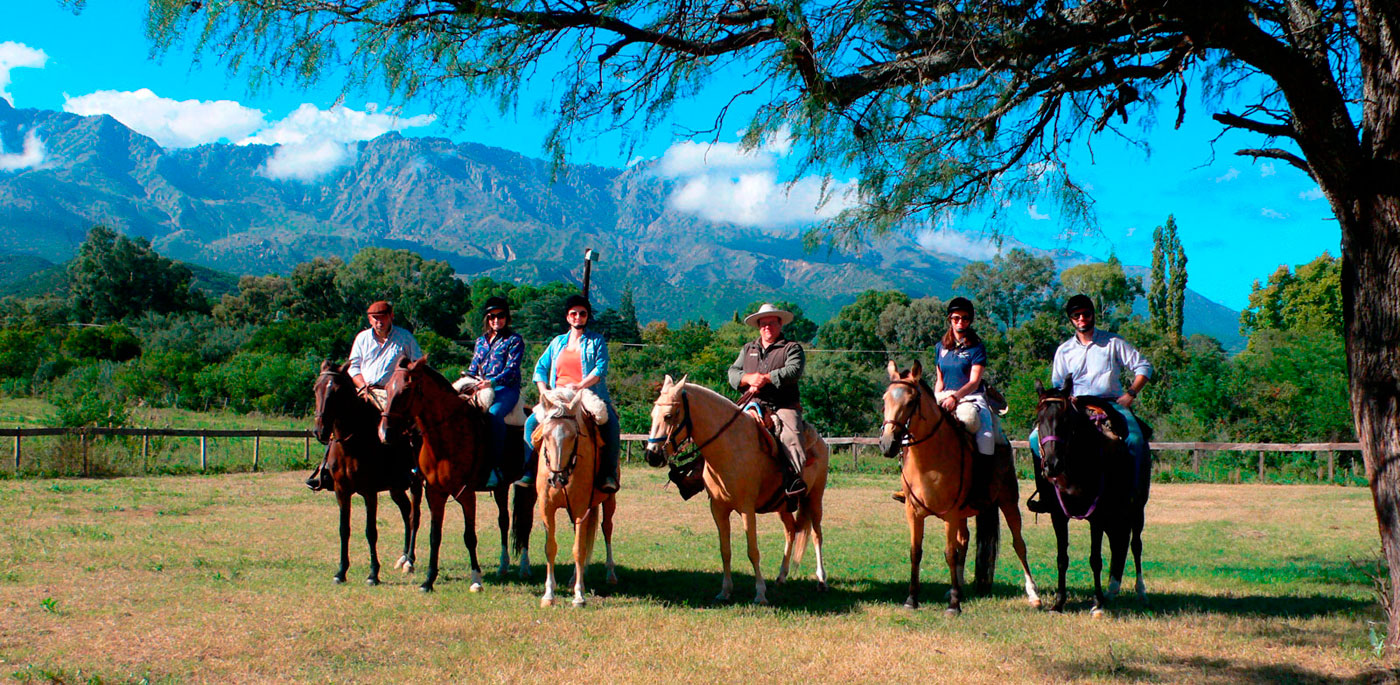
Based on these principles, Haras Ampascachi breeds its horses in the fields. For that reason, there are 300 hectares where more than 150 horses are bred.
Those fields are a wild and rural environment, and Haras Ampascachi's main standard for the selection of its best horses, apart from good genetics for its mechanics of movement, is the way in which each horse adapts to the conditions of these fields – food, climate and topography.
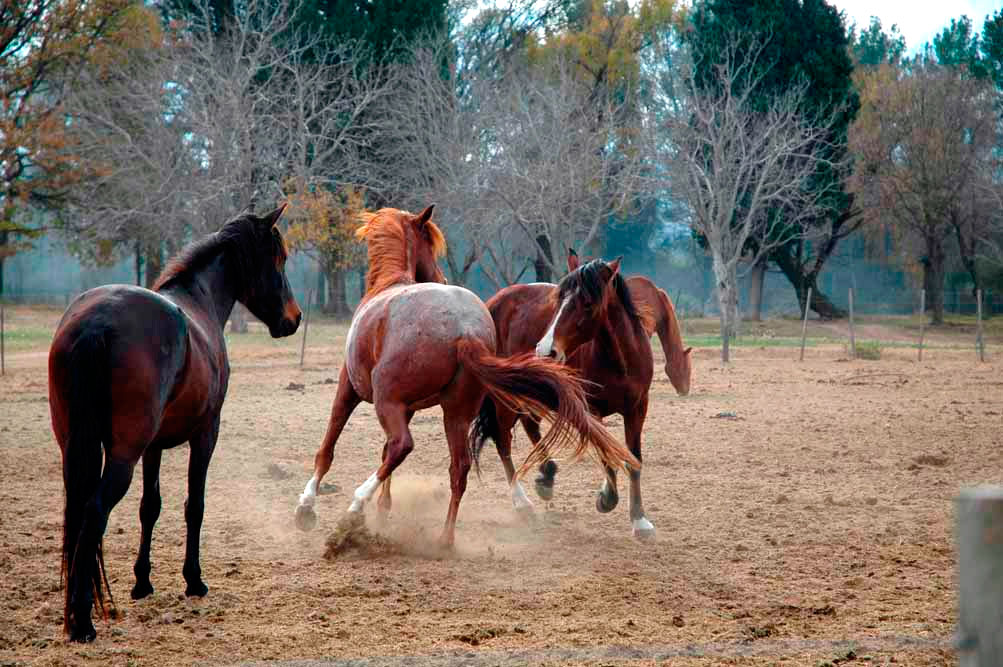
Haras Ampascachi’s foals do not get extra food until they are two, the time when they are started, through what we call “work to hand”, until they can be ridden after they turn three, and it’s here when they begin to have a greater physical demand, and since they cannot meet all their nutritional requirements in nature, they need extra feeding.
But in those years when the climatic conditions are really bad and the fields are too poor, horses receive feed concentrate, but only the right amount.
In the fields, conditions can sometimes be unfavourable, as regards both food and climate, and those animals that are better adapted to such conditions will be the ones with a great performance in long journeys, because they have the capacity to deal with different situations related to food, weather conditions and topography. Such situations can happen during an equestrian route or tour.

This breeding and selection criterion may seem hard, but it is the most efficient when it comes to achieving the qualities of Strength, Rusticity and Resistance. These three elements, in addition to taming and training, help gather the best attributes for a horse destined to do Equestrian Routes in nature.
Horse Taming
Haras Ampascachi has used a taming process based on the principles of ethology and behaviourist theories of learning for many years, which is very efficient and fruitful. Thanks to those principles many difficult situations were solved and, oddly enough, they are not frequently used when taming horses, although they are commonly seen in the training of other animals (dogs, dolphins, sea lions, etc.).
With that solid foundation, which has a scientific basis, we developed the techniques to teach horses to respond – and, in that way, to better communicate with them – to the cues we give with our legs, reins and seat, in a systematic way, in order to transmit and train other people who, through these notions and techniques, can tame or train horses, according to the current quality requirements.
On the basis of these scientific principles, Haras Ampascachi has developed a taming protocol, which enumerates and explains “how” all the steps are followed, and it has the verification of the results that should be obtained in each step, so as to move forward to the following one, throughout the whole taming process of a horse.
Such protocol steps start with the familiarization between the horse and humans. In that way, horses lose their fear of humans’ presence and, then, they are ready to start learning until they can be finally ridden and handled by any rider, in a reliable way.
The core of these principles, which this taming technique is based on, is the Stimulus – Response theory.
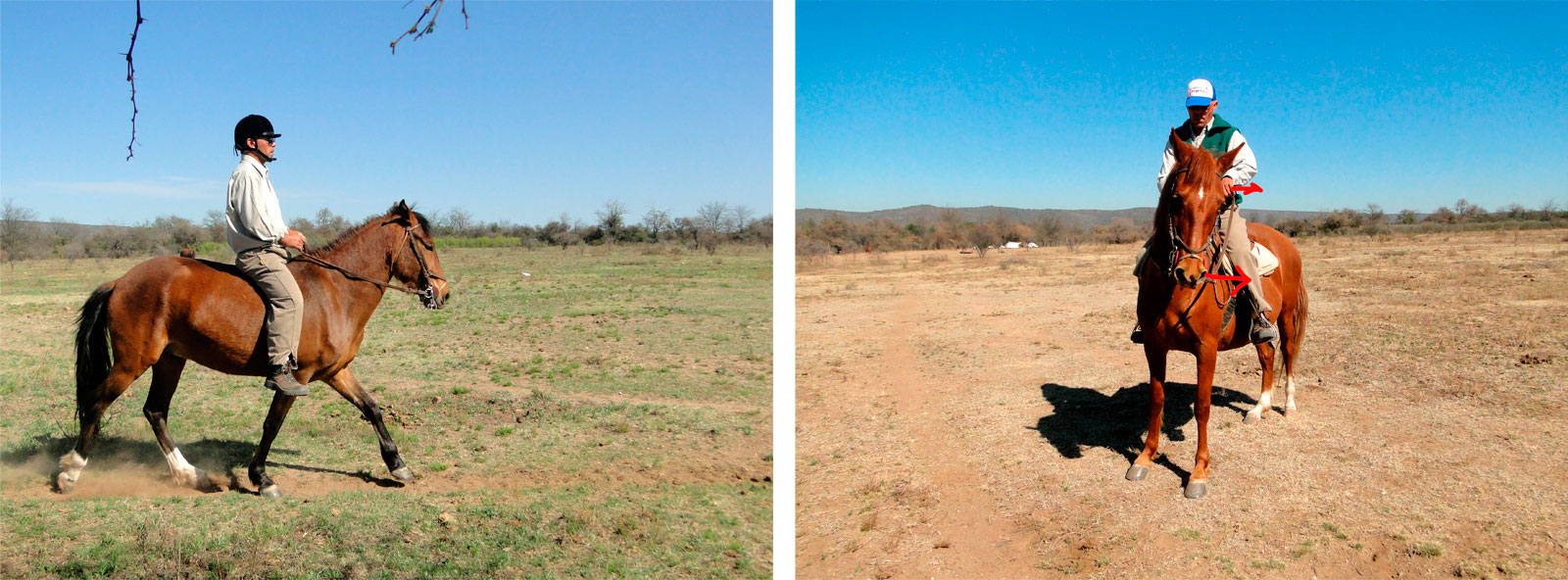
Subscribe to the Ampascachi Community and obtain benefits and exclusive content. Furthermore, we offer free advice on horses and equestrian tourism.
A cue, such as pressing with the legs or the bit, causes a discomfort which, depending on the intensity, stimulates the horse into giving a response. When the horse gives the response that the tamer desires, the latter immediately stops that pressure or stimulus, and this is a reward for the horse.
The horse sees that the behaviour that it practiced before being freed from the pressure-stimulus, is what actually frees itself.
In this way, after horses experience this pressure-stimulus feeling, they begin to learn.
With the repetitions of Pressure-Stimulus-Response, the neural connections that are obtained set this learned behaviour until it becomes a habit (synchronization).
The above mentioned leads us to another key element: we must teach one single cue-stimulus for a single response. This prevents horses from being confused and, therefore, they will be calm.
This principle was already mentioned in the 18th century by the great French riding master François Robichon de La Guérinière, when he said: “Legs without hands and hands without legs”.
Horse Training
When we talk about training, we mean the physical preparation of horses, which enables them to be in perfect physical condition to resist long distances with the rider, as well as further reinforcing the cues and responses learned before.
Horses must train six days a week and rest one.
Horses are treated as real athletes and this stage comes after the taming process. During this stage, horses should get the right amounts of food, depending on each type of training.
In this training, horses start by working 30 minutes each day. That time is gradually increased until 90 minutes each day, following tracks with different levels of complexity and practicing the different gaits of the PPH, ranging from a relaxed stride to different speeds of paso llano and gallop, relaxed and accelerated.
After each training session, the heart rate of the horse and its recovery time are checked.
When this recovery time decreases or it becomes acceptably low, with every level of training, we can say that the horse is in good shape and it must stay that way in order to be used in equestrian routes.
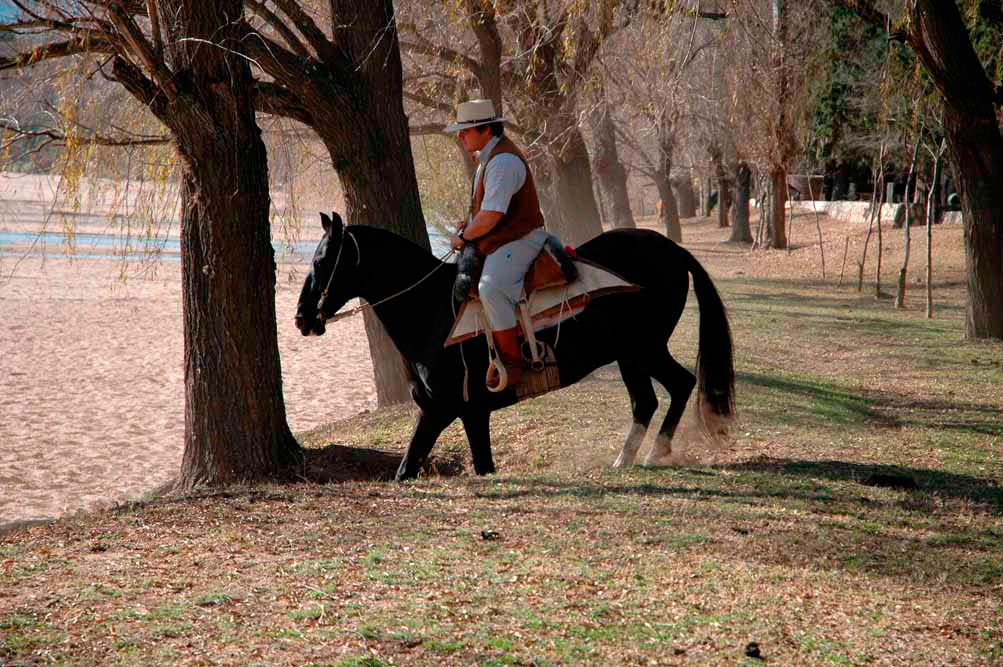
The horse is a key element of Equestrian Tourism.
The Peruvian Paso Horse
is a very special breed for this activity and
in Ampascachi Horse Riding Holidays it receives a very
professional and careful treatment.
Would you like to delve deeper into the world of horse training?
Download our free guide on Horse training step by step. There we tell you everything we have learned about horse training in more than 25 years of experience.
And if you want to be a professional horse trainer and get field-based training, you should check out our training program. You will have the opportunity to live in our equestrian centre and experience our full training process with young horses.
~
THIS COULD ALSO BE INTERESTING
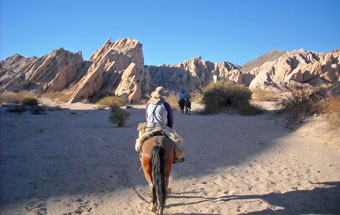
Visiting Northern Argentina on Horseback
Travelling around the north of Argentina on horseback offers you some wonderful options. Riding a horse, you will go through the awesome landscapes of the Calchaqui Valleys.
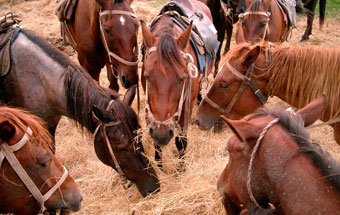
Horse feeding
Horses are herbivorous animals with a delicate digestive system. Knowing how to feed them correctly is fundamental to avoid the occurrence of diseases.
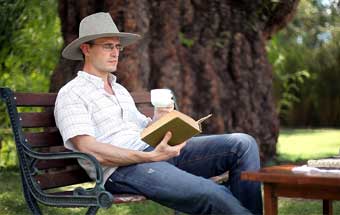
Improve your leadership qualities with horses
Being with horses gives us positive feelings, increases our self-esteem, improves our understanding of body language and empowers our confidence that we can reach our goals.
~
WHAT IS YOUR OPINION? LEAVE A COMMENT
Planning your horse riding holidays?
Join the Ampascachi Community. You will get exclusive advantages and guidance for your next horse riding holiday.


 German
German French
French Spanish
Spanish